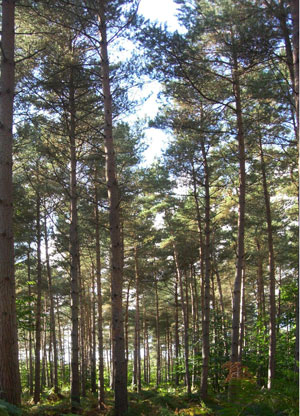Wildlife in Scotland

NaturScot is Scotland’s nature agency. It monitors and reports on all aspects of the natural environment. It has published a report on its terrestrial bird breeding species and it is a somewhat mixed report.
Some of the most ‘famous’ species associated with Scotland, such as the black grouse have declined significantly during the period of study (1994 - 2019). The grouse population has halved, and the kestrel, greenfinch and lapwing populations are also in decline. Woodland populations of Capercaillie have also fallen. The largest grouse in the world, the capercaillie was once widespread but suffered local extinction in the eighteenth century and was reintroduced in the C19th. It is now only found in old pine forests and mainly in the Cairngorms National Park. The Capercaillie are now red-listed and protected in the UK. [The Pine Marten which feeds in part on the eggs of game birds was almost lost in the nineteenth century, due to farmers and gamekeepers trapping them.]
The fall in bird numbers has been associated with changes in climate, notably warmer and wetter weather coupled with extreme events (such as flooding and heat waves). Whilst some species have suffered as a result of the changing weather, others seem to have prospered, including some that do not ‘traditonally’ make their way to Scotland. The great spotted woodpecker is one such species, its numbers have increase by 500%, bullfinch and red numbers have also increased. Gold finches and magpies are now more common on farmlands in Scotland.
 various measures could help offset some of these declines,.such as
various measures could help offset some of these declines,.such as
- the diversification of woodland (more tree species)
- restoration of peatlands
- Creation of habitats on farmland
- legal predator control
- deer exclusion to allow regeneration
- removal of deer fencing, (where feasible) as capercaillie and black grouse are known to fly into this and injured as a result.
One example of the benefits of deer fencing is to be seen in the Glen Lyone woodlands. Historically, this area was part of the royal hunting grounds of Cluanie and was home to capercaillies, wildcats and lynx. Nineteenth century maps show a significant area of woodland, but by the 1990’s less than a hundred of the ancient pines were left. The oldest pine in the area dates back to the C14th century, and many others are several centuries old. However, the area was heavily grazed by deer, which reduces regeneration as young seedlings / saplings get eaten. Now “Trees for Life” have erected new deer fencing, which hopefully will allow natural regeneration of pine forest in the area. Calendonian Forest once covered much of the Highlands but now less than 2% of it survives.
Full details of this project (and a video) may be found here ; https://treesforlife.org.uk/scotlands-oldest-wild-pine-saved/


Leave a comment